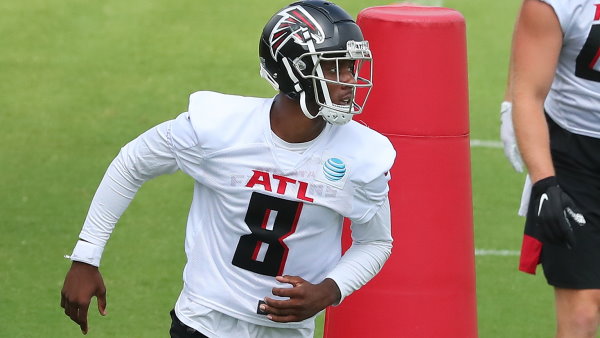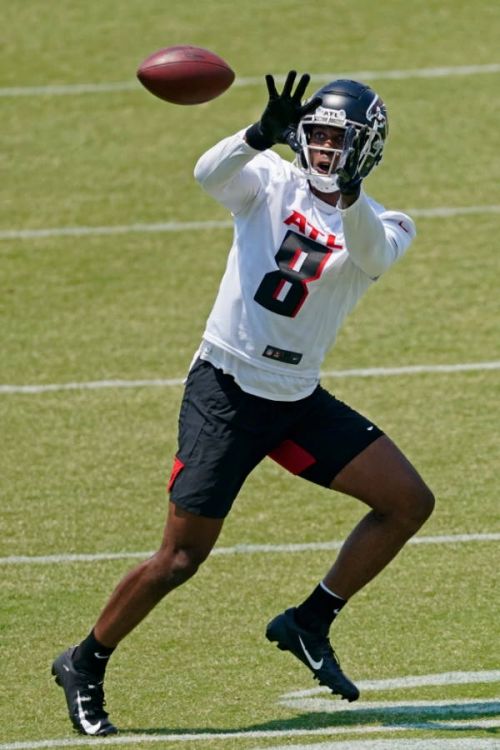Welcome back to the Rookie Report! We’re about to get into the full swing of the preseason, which means your fantasy draft is probably fast approaching. Today I continue my preseason look at the rookie class. If you missed my QB fact sheet or running back fact sheet, you can find the QBs here, and the RBs here, but today I’m looking at the tight ends. The premise is simple. I’m going to give you some cold hard facts that apply to the rookie tight end class based on things like draft capital, college production, and coaching tendencies, and then give you my interpretation of what those things mean for 2021 season and beyond. Since most dynasty rookie drafts are over, the info is going to slant towards redraft leagues, but there will be some dynasty tidbits thrown in as well. Let’s dive in…
FACT:
The average TE4 in the past 5 seasons has scored 195.6 PPR points. Only 2 rookie tight ends have ever scored more PPR points than that, most recently Keith Jackson in 1988. Kyle Pitts is being drafted as the TE4 in redraft leagues.
What it means:
As you might expect, any rookie tight-end overview might as well just be called the Kyle Pitts article. A lot of these facts are going to focus on Pitts. What this particular stat is telling you is that Pitts will need to post the best rookie TE season of the last 30 years to be worth his ADP. While that’s within his range of outcomes, I’m not sure it’s a bet that I’m willing to make. Maybe if I dig into some of the reasons why he’s so highly regarded I can get a bit more clarity…
FACT:
In all the years that Arthur Smith was on the offensive coaching staff for the Titans (since 2012), they’ve never ranked higher than 19th in the league in pass attempts. In his two years as the offensive coordinator, they ranked 31st and 30th.
What it means:
A big piece of the argument in Kyle Pitts’ favor for 2021 is that he steps in as the number 2 target in one of the highest passing volume offenses in the league, but will they stay a high-volume passing offense? Atlanta has ranked in the top-10 in passing attempts in the league in 10 of the last 12 seasons, and in the top-5 in 6 of the last 9, but Arthur Smith would prefer if the Falcons’ offense is more balanced in 2021 if his coaching history is any indication. The coaches that Smith cut his teeth under in the NFL had run-heavy offenses, and Smith continued that in his two seasons as the offensive coordinator.
The Falcons don’t have Derrick Henry, and they have a Vegas win total of just 7 games, so they aren’t going to rank 30th in pass attempts this season like the Titans did in 2020. They’re still likely to throw substantially less often this season. It’s entirely possible they fall out of the top-10 after ranking 4th in pass attempts last year. Don’t be surprised if they throw the ball fewer times in 17 games this season than they did in 16 games in 2020. If you’re penciling in the Falcons for 625+ pass attempts, and 120+ targets for Pitts, you’re probably setting those marks too high.
FACT:
Since 1980, there have been 7 tight ends selected in the top-10 picks in the NFL draft. Only Junior Miller (156.2 PPR points in 1980) scored 100 or more PPR points as a rookie.
What it means:
Pitts’ lofty draft capital is another brick people use in building the case for him, but in the last 41 years, only one tight end drafted in the top 10 finished as a top-10 fantasy tight end as a rookie. None of those players were drafted quite as highly as Pitts (4th overall), but Kellen Winslow and Vernon Davis were both picked 6th, Junior Miller was picked 7th, and TJ Hockenson was picked 8th and was the first non-QB offensive player drafted in 2019. While I agree with most folks that Pitts is nearly a lock to finish as a top-10 tight end in 2021, every single tight end drafted in the last 4 decades with similar draft capital to Pitts has underwhelmed as a rookie.
FACT:
Since 1990, there have been 34 tight ends drafted in the first round of the NFL draft. Only 2 of them (Tony Gonzalez and Greg Olsen) have more than 3 seasons with 800 or more receiving yards. There have been 8 non-first-round picks with more than three 800-yard seasons in that span.
What it means:
This stat looks at Pitts’ draft capital through the dynasty league lens. The true elite producers at tight end have often come from unexpected places. Gronk was drafted in the 2nd round. Travis Kelce was a third-round pick. Darren Waller was a 6th-rounder. George Kittle a 5th, Shannon Sharpe a 7th, and Antonio Gates an undrafted free agent. The NFL has had a really hard time identifying the true difference-makers at the position for a long time. Pitts is already going as the 25th overall pick in dynasty start-up leagues. At that price point, you basically need him to have a career like Tony Gonzalez, Antonio Gates or Travis Kelce where he is a perennial top-3 fantasy tight-end to be worth what you’re paying. If his career looks more like Greg Olsen’s or Vernon Davis’, you’re going to regret ponying up for him.
FACT:
According to PlayerProfiler, Noah Fant had a higher college dominator rating, an earlier breakout age, and a higher SPARQ-x score than Kyle Pitts
Vernon Davis was better than Pitts in all those areas except breakout age, but Davis also ran a faster 40-yard dash than Pitts.
What it means:
Before Pitts landed in Atlanta as the 4th overall draft pick, it was his size, athleticism, and college production that had people calling him the greatest tight end prospect of all-time, but there’s a case to be made that a player drafted just two years ago was a better athlete and was more productive in college than Pitts…and Vernon Davis in 2006 is probably the most athletic tight end prospect of all-time.
In fairness to Pitts, his overall combination of draft capital, landing spot, athleticism, and college production hasn’t been duplicated in the league’s history. He truly is among the best tight-end prospects to ever come into the league, if he’s not *the* best. Barring injury he’s a virtual lock to finish as a top-10 tight end this season. Just know that if you draft Pitts at his ADP in any format, you’re betting on him posting a historic rookie season. For me, the gap between Pitts and some of the tight ends that have come before him and failed to stand out as rookies isn’t wide enough for me to make that bet.
FACT:
In the past 5 seasons, the average TE12 has scored 138.5 PPR points.
Since 2000, only 6 rookie tight ends have scored more than that. Four of them were drafted in the first or second round of the NFL Draft.
What it means:
There isn’t a lot of reason to consider any rookie tight ends taken in the 3rd round or later in redraft unless it’s on the waiver wire after they show you something in-season. Since 2000 there have been 182 tight ends drafted in the 3rd round or later that at least caught one pass as a rookie, and another 141 undrafted free agents who did. Only 2 of those players scored 138.5 or more PPR points as a rookie. Don’t waste a draft pick thinking you can pick the one-in-150 guy who has a solid rookie season. This approach doesn’t apply to dynasty though. Plenty of quality tight ends have come from after the first two rounds – Travis Kelce, Jason Witten, George Kittle, Antonio Gates, etc. They just didn’t produce as rookies.
FACT:
Since 2000, there have been 55 tight ends drafted after the 2nd round of the NFL draft that were 24 years old or older as a rookie (according to Pro-Football-Reference). Three of those 55 tight ends caught for more than 350 receiving yards as a rookie. All three of them – George Kittle, Owen Daniels, and Jimmy Graham - went on to post multiple top-10 fantasy seasons. None of the other 52 posted multiple TE1 seasons.
What it means:
We’re talking about Jacob Harris here. Harris is one of the more intriguing day-three tight-end picks in this year’s draft. He’s a converted wide receiver, so he has the receiving skills that fantasy players look for, and he landed in a good situation with a quality QB and a creative coach who has said glowing things about him since the selection…but at 24, Harris is old for a rookie. Like most rookie tight ends, I don’t expect him to be useful in redraft leagues, but he’s worth a stash in dynasty leagues to see how he performs this year. A tight end with first or second-round draft capital, even an older one, is going to get opportunities at some point. As a 3rd-rounder or later though, those older tight ends need to show something in year one or they probably won’t get much of a shot in later seasons. Dennis Pitta and Brandon Myers are the only TEs since 2000 that fit this category to post even one TE1 season after failing to hit 350 yards as a rookie. If Harris gets to 350+ yards as a rookie, you should be looking to buy or hold into year two. If he fails to get there, you should probably be looking to sell at any moment where an offseason narrative causes his value to spike.
FACT:
Since Mike Tomlin took over as head coach in 2007, the Steelers have drafted 8 tight ends (including Pat Freiermuth this season). Only Matt Spaeth played at least 30% of the offensive snaps as a rookie (He played 40%).
What it means:
Pat Freiermuth probably isn’t going to be on the field as much as you’d like him to be this season. He does have the highest draft capital of any tight end drafted in the Tomlin era, but I’d expect his rookie usage to be similar to Spaeth, who was a third-round pick in 2007. Eric Ebron returns after being targeted 91 times in 2020, and while he can make frustrating blunders at times, he’s also finished as a top-15 fantasy tight end in 5 of the last 6 years. If Ebron stays healthy, he’s going to be the team’s TE1 and Freiermuth won’t be much more than a TD dart throw for most of his rookie season. 2021 is the last season of Ebron’s contract, so the path is clear for the rookie from Penn State to be the lead tight end for the Steelers in 2022. You should be looking to trade for him in-season in dynasty leagues if your league-mate who has him gets frustrated with his lack of rookie production.
That’s all I’ve got for the tight end class. Hopefully, it helps give you some clarity on these guys as you head into your drafts. I’ll be back next week with a look at the wide receivers, but feel free to hit me up on Twitter (@Shawn_Foss) if there’s anything written above you want to yell at me about. As always: good luck, trust your gut, and have fun. It’s just a game.

